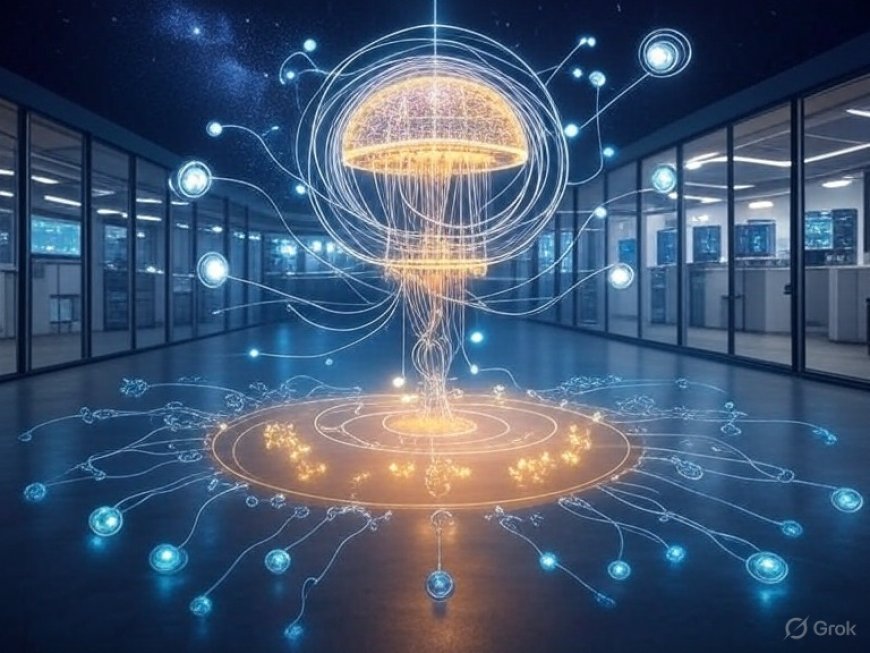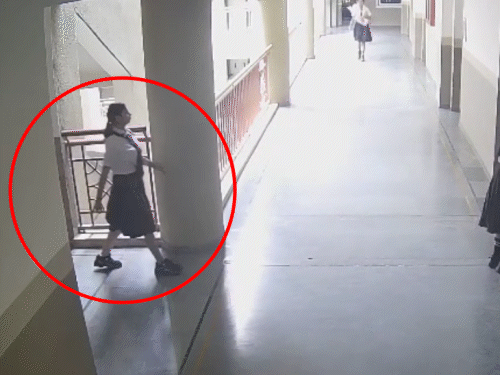Quantum entanglement has long been one of those concepts that sounds more like science fiction than reality. Imagine two particles, separated by vast distances, instantly influencing each other without any apparent connection. Albert Einstein famously dismissed it as "spooky action at a distance," but today, it's not just a theoretical puzzle—it's on the brink of reshaping our world. As we step into 2025, breakthroughs in experiments and applications are pushing this phenomenon toward practical uses, like unbreakable quantum networks and supercharged computers. In this deep dive, we'll explore the basics, Einstein's skepticism, the latest lab results, and how it all ties into the quantum revolution that's unfolding right now.
What Is Quantum Entanglement, Anyway?
At its core, quantum entanglement occurs when two or more particles become linked in such a way that the state of one instantly affects the other, no matter how far apart they are. This isn't like sending a signal—it's instantaneous, defying our everyday understanding of space and time. Think of it as twins who always know what the other is feeling, even if they're on opposite sides of the planet.This idea stems from quantum mechanics, the branch of physics that governs the tiniest particles in the universe. Unlike classical physics, where things are predictable, quantum mechanics thrives on probabilities and weird overlaps. Entangled particles share a single quantum state, so measuring one collapses the uncertainty for both. It's mind-bending, sure, but it's also been verified time and again in labs around the world.
For those new to this, picture flipping two coins that are entangled: if one lands heads, the other must be tails, every time, without fail. Now scale that up to photons or electrons, and you've got the building blocks for technologies that could outpace anything we have today.
Einstein's Famous Critique: The EPR Paradox
Back in 1935, Einstein, along with Boris Podolsky and Nathan Rosen, published a paper that challenged the very foundations of quantum mechanics. Known as the EPR paradox (after their initials), it argued that if entanglement were real, it would imply faster-than-light communication, which violates the speed of light limit in relativity. Einstein wasn't buying it—he believed quantum theory was incomplete, missing some "hidden variables" that would explain the apparent spookiness without breaking his rules.He called it "spooky action at a distance" in letters to colleagues, highlighting his discomfort with the non-local nature of it all. For decades, this debate raged on. Was quantum mechanics flawed, or was Einstein wrong? It took John Bell's theorem in the 1960s to provide a way to test it. Bell showed that if hidden variables existed, experiments would yield certain results; if quantum mechanics was correct, they'd show something else.
Fast forward to the 1980s and beyond, and experiments by Alain Aspect and others confirmed entanglement time and again. No hidden variables—just pure quantum weirdness. Einstein's critique, while brilliant, didn't hold up. But it did spark a deeper exploration that's paying off today.
Recent Experiments: Pushing the Boundaries
in 2025The past year has seen some truly exciting developments in entanglement research, proving it's not just theory anymore. Scientists are now manipulating entangled particles in ways that were once thought impossible, opening doors to real-world tech.One standout experiment came from researchers at the Technion-Israel Institute of Technology, who discovered a new form of quantum entanglement in the angular momentum of photons trapped in tiny structures. This isn't your standard spin entanglement; it's about how light twists and turns at the nanoscale. Published in April 2025, this work could lead to more efficient quantum sensors and communication devices. Read more about this breakthrough here.
Then there's the team at MIT, who in July 2025 stripped the famous double-slit experiment down to its quantum bare bones. By isolating interference patterns without classical influences, they reinforced entanglement's role in wave-particle duality. It's a reminder that even century-old ideas are getting fresh validation.
On a more cosmic scale, studies are linking entanglement to gravity itself. A May 2025 paper suggested that quantum information encoded in entanglement could influence spacetime curvature, potentially bridging quantum mechanics and general relativity. And just this month, physicists observed "negative time" in quantum experiments—particles seeming to exit before entering a state—further blurring our sense of causality.
These aren't isolated wins; they're part of a global push. In August 2025, a group proved a fundamental quantum rule for the first time, using quantum dots to produce perfectly controlled light streams. It's all building toward systems where entanglement isn't fragile but robust enough for everyday use.
Real-World Applications: Quantum Internet and Beyond
So, why does all this matter? Entanglement isn't just for physicists—it's the key to technologies that could redefine computing and security by 2025.Take quantum computing. Traditional computers use bits that are either 0 or 1, but quantum bits (qubits) can be both at once, thanks to superposition. Entangle those qubits, and you get exponential power. Companies like IBM and Google are claiming major strides this year. IBM's latest processors leverage entanglement for error-corrected calculations, speeding up drug discovery and AI training. Google, meanwhile, hit a milestone in August 2025 with chips that simulate complex molecules faster than any supercomputer. Explore IBM's quantum advancements.
But the real game-changer might be the quantum internet. Unlike our current web, which is vulnerable to hacks, a quantum network uses entangled particles for unbreakable encryption via quantum key distribution. If someone eavesdrops, the entanglement breaks, alerting users instantly.
In June 2025, scientists took a huge step forward by demonstrating long-distance entanglement transmission. A project involving fiber optics and satellites achieved stable links over hundreds of kilometers. Deutsche Telekom made headlines in April with an 82-kilometer photon transmission, a practical leap toward global quantum networks. And with initiatives like the EU's Quantum Flagship ramping up, we're seeing prototypes that could connect quantum computers worldwide by year's end. Dive into the latest on quantum internet progress.
Imagine logging into a quantum-secured cloud where data is shared instantly and safely, or running simulations that solve climate models in minutes. By 2025, these aren't pipe dreams—they're prototypes in labs from Chicago to Singapore.
The Road Ahead: Challenges and Hopes for 2025
Of course, it's not all smooth sailing. Entanglement is delicate; noise from the environment can "decohere" particles, breaking the link. Scaling up to thousands of qubits remains a hurdle, but breakthroughs in error correction—like Microsoft's Majorana qubits announced earlier this year—are closing the gap.
As we look to the rest of 2025, expect more hybrid systems blending classical and quantum tech. Governments are pouring billions into this, recognizing its potential for everything from finance to medicine. The International Year of Quantum Science and Technology, ongoing now, is spotlighting these advances and inspiring the next generation.
In the end, Einstein's spooky action might have unnerved him, but it's thrilling us with possibilities. Quantum entanglement isn't just bending minds—it's bending the future of technology. Whether it's revolutionizing computing or securing our digital world, 2025 feels like the tipping point. Keep an eye on the labs; the next big announcement could change everything.

 Like
0
Like
0
 Dislike
0
Dislike
0
 Love
0
Love
0
 Funny
0
Funny
0
 Angry
0
Angry
0
 Sad
0
Sad
0
 Wow
0
Wow
0








































































